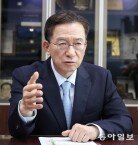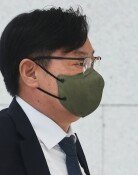Female candidates fared well in constituencies
Female candidates fared well in constituencies
Posted April. 18, 2016 07:36,
Updated April. 18, 2016 07:39
Women’s score in the April 13 general elections has been released. Though it is not A, it can be B. The number of elected women has jumped by 8.5 percent to 51 (25 elected by proportional representation and 26 by constituencies), up from 47 of the outgoing national assembly. What is notable is the strong performance of female candidates in constituencies. By political party, the Minjoo Party of Korea saw 17 out 25 female candidates elected, the Saenuri Party six out of 16 and the People’s Party two out of nine. Rep. Chu Mi-ae of the Minjoo Party has become the first five-term female lawmaker elected by constituencies.
Many of the Minjoo Party's female candidates have been elected, while the Saenuri Party's female candidates became scapegoats in the intra-party conflict. Twenty-five female candidates were excluded during Saenuri's nomination process. The ruling party strategically selected women who have little regional background for regions that the party is unlikely to win and, the result was below the average. While only Lee Eun-jae (Gangnam district C) and Kim Jung-jae (Pohang) were elected, Hwang Chun-ja (Yongsan) and Lee In-seon (Suseong district B) and Son Soo-jo (Busan Sasang) failed.
Who are good lawmakers? Eleven out of 12 teams in a discussion hosted by the Hope Institute, a non-government think tank, said that females are ideal for lawmakers. In other words, women who have horizontal leadership, rather than charismatic leadership, are suitable for politicians at a time when co-existence and communication matter. Due to the gap between ideal and reality, however, Korea has still a low percentage of female lawmakers. Many people say that President Park Geun-hye, who emerged as a politician on the back of her father’s heritage, can hardly be seen as an average female politician.
Proportional representation is a device that supplements the lack of political representation of women who are unlikely to win the competition in constituencies. The system allowed many women to join politics and they were able to run in constituencies based their political experience. The fact that more women were elected by constituencies than proportional representation proves that the mandatory allocation of women in the nomination of candidates for proportional representation has been effective. However, voters judged the attempts that eliminated politicians who the party disliked and placed women instead.
최영훈 tao4@donga.com
Headline News
- Med professors announce intention to leave hospitals starting Thursday
- Bridge honoring Sgt. Moon Jae-sik unveiled in Pennsylvania
- Chief of Staff Chung tells presidential secretaries to stay away from politics
- US FTC bans noncompete agreements
- N. Korea launches cyberattacks on S. Korea's defense companies







